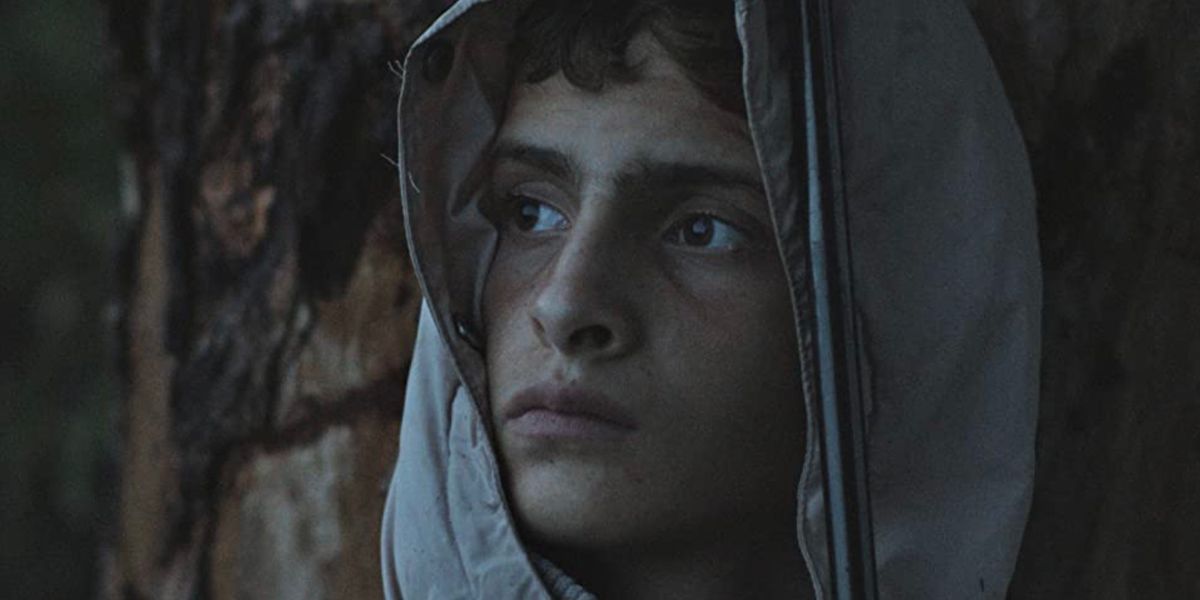There are glimpses of many unique and illuminating human stories in Gianfranco Rosi’s Notturno. But this elegantly lensed yet emotionally frigid documentary (screening at the mostly virtual New York Film Festival) about people trying to find their way in the war-torn Middle East stays stubbornly distant from its subjects.
There’s some suggestion that Rosi is trying to take a broader approach that emphasizes the recurring tensions of a region that has rarely known peace since the dissolution of the Ottomon Empire. But the effect sets a barrier between the viewer and viewed. The viewer may be able to see the viewed, but they cannot quite begin to understand their story or truly empathize with them.
Shot over three years along the fault lines between Iraq, Kurdistan, Syria, and Lebanon, Notturno could be seen as something of a companion piece to Rosi’s 2016 film, Fire at Sea. That Oscar-nominated documentary about North African migrants’ dangerous crossing of the Mediterranean had a similarly cool style, but it still closely twined the migrants’ experiences with those of Italians on Lampedusa where so many migrants land. In theory, Notturno would have been a similar portrait of lives upended by war and societal collapse. But in practice, unfortunately, it reveals very little.
Rosi focuses on several places, cutting back and forth between them without much emphasis on further exploration. The opening title card announces with great understatement that in this part of the Middle East, “Tyranny, invasions and terrorism fed off each other in a vicious circle, to the detriment of the civilian populations.” After that, however, the documentary leaves it up to the viewer to figure out where a particular segment is set, or what is happening.
One of the film’s most beautiful parts shows a contingent of female soldiers standing guard on a lonely outpost. The shots of them posted on high dirt berms overlooking a sweeping green landscape have a timeless quality that’s both visually gorgeous and somewhat flattening. Viewers can figure out that these women are peshmerga fighters on the lookout for ISIS, but that’s only by dint of their gender and identifying the Kurdish flags on their uniforms. (No other militaries in the region actively employ women.)
(IMDB)
While Rosi doesn’t interview any of the peshmerga, a vivid illustration of who they are fighting and why comes in a segment in a schoolroom. A teacher questions children about the pictures they are drawing. “It was very bad, teacher,” one boy says with heartbreaking matter-of-factness, before telling how his picture shows ISIS pursuing, capturing, tormenting, and killing his fellow Yazidis. “This is al-Baghdadi” he says, pointing to a drawing of a fierce-looking bearded man. A girl talks about how ISIS would beat Yazidi children and burn the soles of their feet. “Why did they do that?” the teacher asks. “There wasn’t any reason.”
By letting the children tell their stories in this way, something that happens almost nowhere else in the film, Rosi provides some context and humanity to the widescale devastation and chaos scattered throughout the documentary. Everywhere the camera turns there are piles of rubble, sprawling refugee camps, and men of unidentifiable affiliation wandering with guns.
Even in the moments of calm, there’s the intimation of war. Rosi shows a young couple having a romantic moment sharing a hookah on a high rooftop and enjoying the evening. While they make small talk, small-arms fire crackles in the distance. They make no mention of it. One recurring element follows a poacher hunting for food; the long elegant shots of his boat cutting through reed-filled marshlands at night are lit by fires coming from the horizon where, again, the sounds of gunfire are heard.
The closest that Notturno comes to providing a deeper context for what’s happening takes place in a remarkable segment at a psychiatric hospital. As part of their treatment, a number of patients are selected to perform in a play. We see them rehearsing their lines for a production that looks to be a very high-minded exposition “the tyranny, the wars” that have destroyed so many of the patients’ lives. “I’d rather have lived under a monarchy,” says one man, decrying the post-Ottoman chaos. “What monarchy are you talking about?” a woman snaps back, suggesting that the cycle of war, corruption, and disruption has been going on far longer than the latest calamities in Iraq and Syria.
Even with its stilted declamations and over-the-top video montages (dirge-like ballads playing over footage of war), that play set in the psychiatric ward takes more of an active interest in the subject matter than the documentary appears to. Rosi’s static camera and remote tone looks all too passively at a still-unfolding catastrophe that, very simply, demands greater engagement and understanding.



